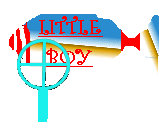

Purpose: Quite common in Hollywood films, a film character shoots at an explosive causing it to go off and cause damage. This week, Scientific AmeriKen will take shots at m-90's and gasoline to see if it is possible to cause an explosion.
![]()
Hypothesis: In order for objects to catch fire they must obtain enough energy for the objects molecules to combine with oxygen and form new compounds. Explosives are such because they do this very quickly, however, still need the initial energy. It is therefore the hypothesis of this experiment that the bullet that is fired from the gun will not create enough frictional energy upon striking the explosive and therefore not cause an explosion.
![]()
Equipment: .177 caliber air rifle, M-90, Gasoline, small container to hold the gasoline, Safety goggles.
![]()
Procedure: Part one includes shooting the M-90 with the air rifle. To do this, set M-90 in a clear area, stand a good distance away (in this experiment range was 18 ft.) and continue shooting at M-90 until it's black powder is exposed or it explodes. Part two includes shooting at gasoline. The first step is to pour gasoline into a small sealable container. Used in this experiment was a small plasic egg used to hold silly puddy. Shoot at the container and examine results.
![]()
Results:
| Target | Observations |
| M-90 | Fourth
bullet finally pierced into the black powder.
M-90 did not explode. |
| Gasoline | First
bullet pierced egg shell.
Gasoline did not catch fire. |
![]()
Conclusions: The good news of these results is that they support the hypothesis. The bad news is that they detract from the magical mystic of Hollywood movies. Perhaps if by random event the bullet creates a spark upon impact with the explosive then Hollywood may be justified. However it is fortunant that Scientific AmeriKen left out shooting a pile of black powder. As the image of the old west gun powder trail started by the shooting of a bullet can go on forever!

![]()
![]()
![]()
Click
here to go to a printable version of this experiment
Right Click here to adjust the sound--->